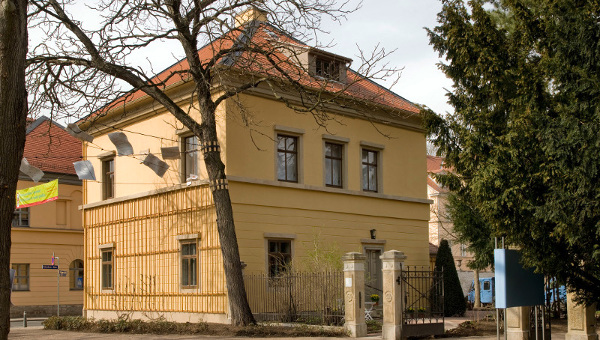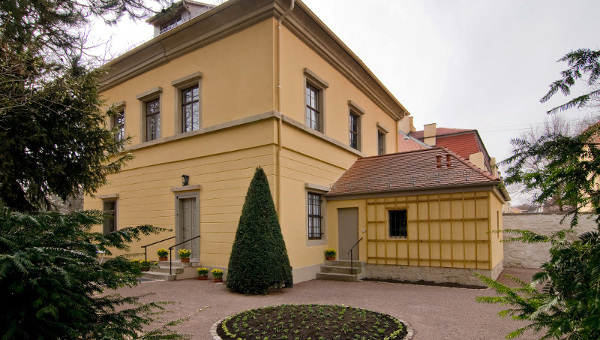








Marienstraße 17
99423 Weimar
Tel. +49.3643.545400
Web: www.klassik-stiftung.de/liszt-haus/
Email: info@klassik-stiftung.de
im Sommer
Mittwoch bis Montag 10-18 Uhr
im Winter
geschlossen
Das klassizistische Gebäude wurde kurz vor der Wende zum 19. Jahrhundert als Hofgärtnerhaus errichtet und 1819 durch den Baumeister Clemens Wenzeslaus Coudray umgestaltet. Bevor Franz Liszt 1869 einzog, diente das Haus ab den 1850er Jahren als Atelierhaus für Friedrich Preller d.Ä. und Hermann Wislicenius.
Franz Liszt hatte sich bereits von 1848 bis 1861 als Hofkapellmeister in Weimar aufgehalten. Als er auf Einladung des Großherzogs Carl Alexander nach Weimar zurückgekehrt war, nutzte er das von Großherzogin Sophie komfortabel ausgestattete Hofgärtnerhaus bis zu seinem Lebensende 1886. Liszt unterrichtete in seinem Wohnhaus unentgeltlich zahlreiche junge und begabte Pianisten aus dem In- und Ausland. Schon kurz nach seinem Tod wurde auf Initiative Carl Alexanders ein Teil der Räume als Memorialstätte eröffnet. Das Wohn- und Arbeitszimmer als zentraler Salon blieb dadurch in der ursprünglichen Einrichtung erhalten, Schlaf- und Speisezimmer wurden später rekonstruiert.
Heute ist die letzte Weimarer Wohnung Liszts wieder als ein authentisches Interieur der Gründerzeit erlebbar. Seit 2006 ist im Erdgeschoss eine mediale Dauerausstellung zum Leben, Werk und Wirken Liszts zu sehen.
Deutschland verfügt über musikalische Traditionen und Nachlässe von außerordentlichem Wert: Händel, Schütz und Bach, Beethoven, Mendelssohn, Schumann, Brahms und Wagner sind - um nur einige Namen zu nennen - weltweit bekannte und geschätzte Komponisten. Ihr Wirken hat eine einzigartige Musiklandschaft wesentlich mitgeformt.
Zahlreiche Orchester, Chöre und Ensembles, renommierte Musikfestivals und -reihen, Musikerhäuser mit Museen, öffentliche Archive und Bibliotheken, aber auch private Sammlungen bewahren ihr musikalisches Erbe.
Diesen unschätzbaren Fundus gilt es immer wieder neu zu beleben und für die Gegenwart zu erschließen. Den in der Arbeitsgemeinschaft Musikermuseen Deutschlands zuusammengeschlossenen Häusern kommt dabei eine wichtige Rolle zu. In ihnen begegnen wir dem Werk von Musikern und Komponisten, die die Kulturnation Deutschland außerordentlich bereichert haben. Über das individuelle Portrait, über die Vermittlung des einzelnen Œuvres hinaus tragen die Musikermuseen aber auch zur Pflege musikalischer Tradition insgesamt bei. Die vorliegende Broschüre unterstreicht diesen Aspekt der Zusammenschau, und sie lädt zu einer Reise in die Musikgeschichte Deutschlands ein. Ich wünsche diesem Reiseführer regen Gebrauch und eine große Resonanz.
Bernd Neumann, MdB
Staatsminister bei der Bundeskanzlerin
Der Beauftragte der Bundesregierung für Kultur und Medien
Zitat: Vorwort zur Broschüre der Arbeitsgemeinschaft "Musikermuseen in Deutschland", 2007.